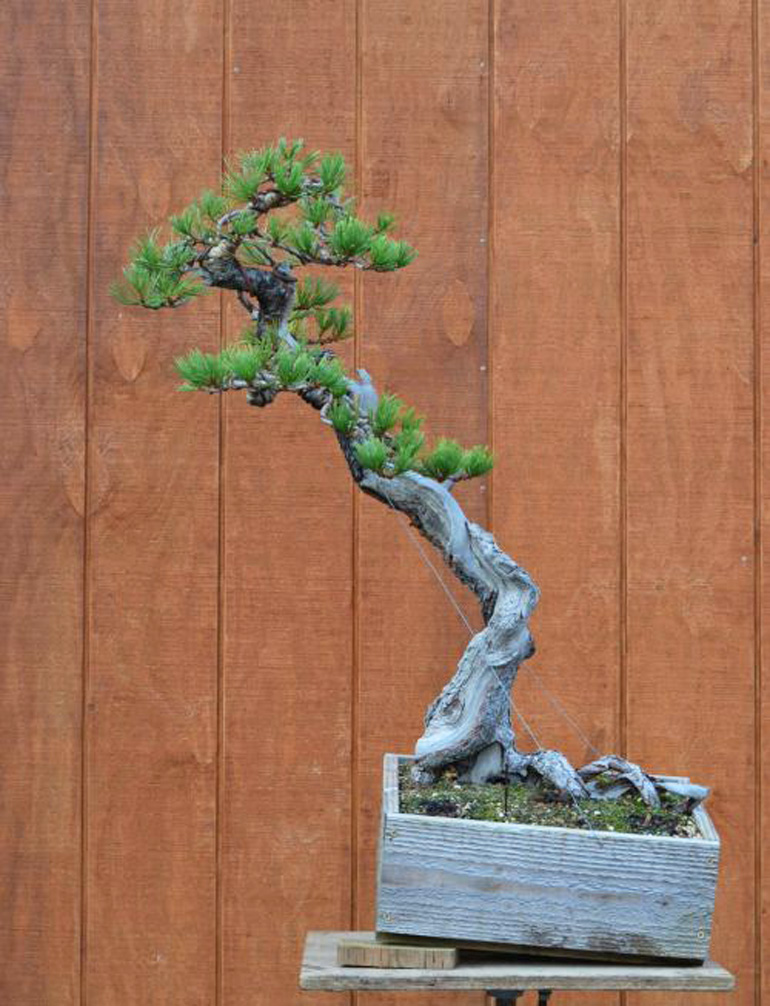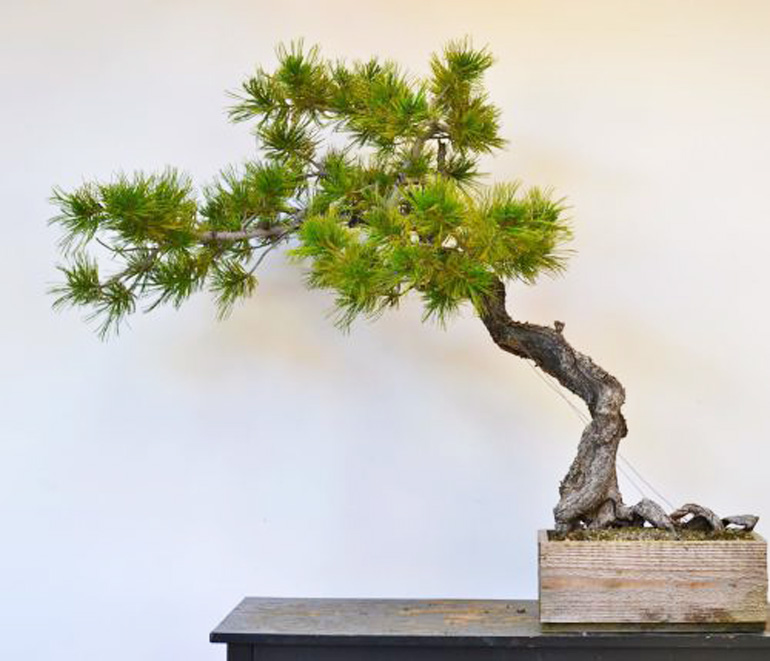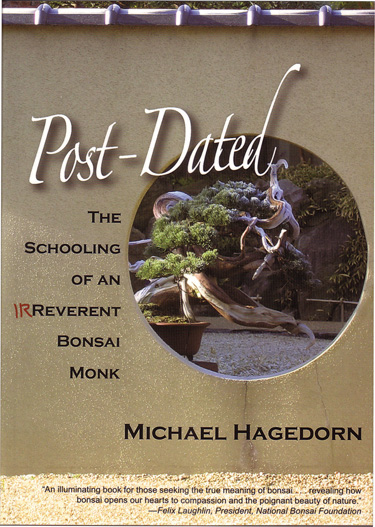
It has been a while since we’ve shown this familiar wood paneling from Michael Hagedorn’s workshop. BTW: the tree is a Limber pine styled by Michael and friends.
Whenever I visit Michael Hagedorn’s Crataegus Bonsai Blog I’m impressed with Michael’s knack for simplicity (this view was reinforced when I studied with him for a few days last year). An important part of this simplicity is less concern with earth shaking transformations and more inclination to the long view with slower more natural development (you can visit Crataegus Bonsai and see if you agree).
This long view is especially good for us slow learners. There is a time for decisive action, but for those of us who haven’t mastered the basics, the gradual path is invaluable.
It’s not that you don’t do anything. You need to develop and refine your skills by studying and working on your trees. But this process works best when it unfolds slowly, allowing time to develop appreciation for each tree’s potential and what makes each tree unique. I think Michael would agree.

Before.
 ‘Helix’ roots. For more photos of this and other remarkable trees, visit Crateagus Bonsai.
‘Helix’ roots. For more photos of this and other remarkable trees, visit Crateagus Bonsai.

Michael’s Post Dated. Still the best bonsai read around.
The remarks about simplicity are to me as an advanced but still ordinary bonsai-stylist very important. In as much as I can appreciate all the magical bending techniques (especially using conifers and sometimes Ficus) I think that it is extremely important to create simple, sometimes elegant, sometimes heavier bonsai, by using branches (and developing branches, of course) and my personal approach is to try and design something that you would one day see in nature. The work of Mr Pall from Germany is a nice example of this attitude. I live in South-Africa and we have to use material that is natural (indigenous) to the southern tip of Africa. We see different shapes of trees in nature than our friends in the northern hemisphere and in the more tropical areas like Indonesia and parts of S America. And maybe that is why I have a naturalistic approach (see Walther Pall).